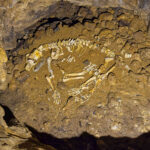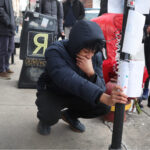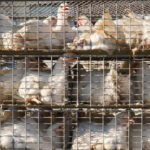Divided We Stand, United We Fall?
SAN ANTONIO — Scores of science writers have descended on the Lone Star State’s second-largest city this weekend for the annual meeting of the National Association of Science Writers, an organization that brings together both science journalists and institutional communications professionals — though that union may not last much longer.

Journalists and non-journalists within the National Association of Science Writers are having disagreements. Can they get past them?
Visual: iStock.com
Amid the usual assortment of workshops and talks, members of the group, which is one of the oldest professional writing organizations in the country, cast their votes Saturday on a contentious proposal that would, for the first time, allow non-journalists to hold the highest governing positions within NASW. The issue has split the membership along ideological lines, and should it pass (a distinct possibility), it would likely lead to an exodus of journalists and possibly the group’s demise.
That doesn’t surprise Huseyin Leblebici, a professor of business administration at the University of Illinois. In an era of shifting job definitions and fluid career paths — not just in journalism, but in other professions as well — it’s becoming harder for professional organizations to cohere around a single identity. “The value of professional organizations is not declining, but their management is becoming more difficult,” says Leblebici. “The difficulty stems from the fact that professions are becoming more complicated and diverse. It is not possible to simply rely on specific credentials or career patterns to identify who belongs to a particular profession and thus a professional organization.”
That can sometimes become unwieldy, Leblebici suggested, pointing by way of example to groups like the American Sociological Association and the Academy of Management, which have thousands of members with “tens of different divisions, some with PhDs, some with consulting activities.”
“When the organization gets too large, they may simply split, or each division starts to run their own affairs separately,” Leblebici said. “One example is [the Institute for Operations Research and the Management Sciences, or INFORMS], which includes professionals from data analytics to marketing researchers, with separate journals or meetings.”
Whether NASW’s 2,200 dues-paying members might find a way to carry on with two distinct divisions — one devoted to journalism and another to institutional communications — is unclear, though many members of the group suggest that constituent diversity is precisely what what makes the organization so valuable. The group’s member pool, after all, includes everyone from museum exhibit designers and public relations professionals to investigative journalists and magazine editors. That means that science storytellers of all kinds, including those who aren’t quite sure how to define themselves, can find exposure to peers and role models from an array of disciplines.
“I like the idea of having a community of people who are going for the same things that I am,” said Sarah McQuate, a student in the science communication program at the University of California, Santa Cruz. “Because I don’t know what I want to do with my career,” she added, “the networking is important.”
Lizzie Wade, a correspondent for Science magazine in Mexico City and frequent contributor to Wired, also describes NASW meetings as a place to network and commiserate with her peers in journalism, many of whom are also trying to obtain — or maintain — a career foothold. “The industry’s changing really fast,” says Wade. “It’s not so helpful to hear about what people or newspapers did in the past. What’s valuable to me is the community of people doing the same thing I’m doing right now.”
Few NASW members seem to argue that a diversity of career paths within the group is anything but a boon. And yet, while journalists within the group consider it crucial that they maintain exclusive leadership control, that remains a tough sell among some public relations professionals in the group, who pay the same dues and who enjoy all the same benefits of NASW membership — except for the ability to lead.
This has not been a problem at the Association of Health Care Journalists (AHCJ), another professional organization, which maintains a two-tiered membership structure, with non-journalist communications professionals eligible only for “associate” membership. Associate members cannot vote on matters within the group, nor can they run for positions on its board. Other journalism organizations, including the Society of Environmental Journalists, have similar rules. So, too, did NASW itself, until the late 1990s, when the group amended its constitution to put all members, journalists and non-journalists alike, on an equal footing — again, with the exception of the ability to hold top leadership roles.
AHCJ vice president Ivan Oransky says his organization has never been stronger, and that’s in part due to its tight focus on training journalists to cover health care. Institutional press officers are welcome to attend conferences, he says, but the organization isn’t built to serve them. Rather, the AHCJ’s workshops, email listservs, conferences and online resources, he says, are exclusively concerned with journalists’ professional development — especially those who aren’t getting mentorship or training on the job.
“No one really gets their own training anymore even in newsrooms,” says Oransky. “Pound for pound, that’s the most useful information a journalist can get.”
Whether or not the AHCJ’s experience could be instructive for the conferees gathered this weekend in San Antonio is an open question, but if a significant enough number of journalists make good on their threat to leave NASW should Saturday’s vote pass, folks on both sides of the issue might well find themselves with some time and reason to contemplate the matter.
The results of Saturday’s vote won’t be known, NASW officials say, for a couple of weeks.
Correction: This post has been updated to clarify that PIOs are welcome to attend conferences but not join. The AHCJ’s membership tiers are explained here.











Comments are automatically closed one year after article publication. Archived comments are below.
I find it odd that you quote extensively a professor of business administration citing very different organizations from NASW, in discussing the situation of NASW, which has thrived for decades with a healthy mix of “museum exhibit designers and public relations professionals… investigative journalists and magazine editors.” I’ve been an NASW member for some 40 years, and I see no evidence of any mass exodus, and certainly not of NASW’s demise. In my opinion, the two-tiered membership of the Association of Health Care Journalists is an anachronism, given the huge increase in freelancers, and their need to generate income from a variety of sources, including institutional writing. I find NASW’s membership policy and programs far more supportive of writers facing the 21st-century reality of the marketplace.
I suppose “healthy mix” is what’s up for debate. As for freelancers breaking in, I wrote about “the 21st-century reality of the marketplace” in my last piece for Undark: http://undark.org/article/economics-young-science-writer/
I would also note in conjunction with this post that the term “exodus” is uniformly considered in the etymological literature to mean a simultaneous mass departure or emigration of people. For which there is scant evidence provided by the author in this instance.
(Also, one of the synonyms given for “exodus” by the Oxford English Dictionary is “chicken run.”)
I’m troubled by your initial assertion that because of the discourse and dissent within NASW now over an amendment to its constitution, “that union may not last much longer.” As a member of that organization since 1979, and having attended more than 30 national meetings, including this latest one where I easily discussed the issue with dozens of members, your assumption that the association is teetering on some cliff, about to disintegrate, is pure hyperbole. You quote no legions of members about to leave, nor do you provide any evidence of an impending death knell for the organization as it is. Borchelt, on the other hand, in his comment, provides facts uncovered by the ad hoc committee through intense work, that show a tiny faction of those asked — not of all members, by the way — have warned that they might leave is the vote doesn’t go their way. You’d think that as science writers, and since Undark proclaims to do science writing the right way, that your piece above would contain more facts. As much as I admire Undark and my friends who created it, its coverage of this issue has appeared less than balanced, leaning heavily in support of the journalists-only stance. That is sad since, with the rapidly changing landscape of journalism, it seems that convincing non-journalists of the benefits of the base tenets of journalism would be a better approach in the long run. Instead, it seems that journalists would rather hunker down and make a last stand, or at least the verbiage seems to suggest that.
The report so meticulously crafted by the Ad Hoc Committee earlier this year and fully endorsed by the officers and board has much to say about this, none of which warrant the use of terms like “exodus” or “demise.” Very unfortunate, yes, and I hope those who say they would take their balls and go home would reconsider in the light of the association’s extended deliberation over this issue in the ensuing months (especially if the “listening sessions” promised by the board and president back in June actually materialize).
In particular (from the report):
>>Effect on membership numbers
● 54 people (of 658 complete respondents, or about 8%) say they are likely or extremely likely to leave NASW if the proposed constitutional change is made.
○ 48 of these 54 people self identify as journalists.
○ 13% of journalists and 2% of nonjournalists indicate they are likely or extremely
likely to leave if the proposed change is made.
● 25people (4%) say they are likely or extremely likely to leave if the change is not made.
○ 20 of these people are PIOs and 4 are journalists. One identifies as “Other.”
Effects on engagement and volunteerism
The survey asked people how the proposed constitutional change would likely affect their experiences in NASW or the science writing profession.
● Overall, more people report expected positive effects than negative effects if the proposed amendment passes.<<
That would leave a max net loss of 4% under either scenario. Again, none of this supports the tone of alarmism and fear-mongering that underpin this article.